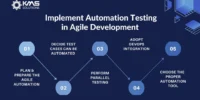Welcome to the forefront of Edge AI Excellence 4.0! In this dynamic landscape of artificial intelligence, pushing the boundaries of Edge AI opens up new possibilities for real-time processing and decision-making at the edge. Let’s explore quick tips to propel your Edge AI implementations into a new era of excellence.
1. Optimize Model Efficiency: Balancing Power and Performance ⚖️
Begin by optimizing your AI models for edge deployment. Striking the right balance between model complexity and performance is crucial. Consider techniques like quantization, pruning, and model distillation to reduce the model size and computational requirements without compromising accuracy. This optimization ensures efficient execution on edge devices with limited resources.
2. Edge-friendly Frameworks: Choosing the Right Tools for the Job ️
Select frameworks that are tailored for edge deployments. Edge-friendly frameworks are optimized to work seamlessly with resource-constrained devices. TensorFlow Lite, PyTorch Mobile, and ONNX Runtime are examples of frameworks designed to deliver high-performance AI in edge environments. Choose the one that aligns with your specific use case and hardware constraints.
3. Edge Device Selection: Matching AI Models with Hardware Capabilities
Align your AI models with the capabilities of edge devices. Different edge devices have varying computational power, memory, and energy constraints. Tailor your AI models to the specific characteristics of the target devices to ensure optimal performance. This targeted approach maximizes the efficiency of your Edge AI implementations.
4. Federated Learning: Collaborative AI Training at the Edge
Explore federated learning for distributed training at the edge. This collaborative approach allows models to be trained across multiple edge devices without centralizing data. Federated learning enhances privacy, reduces communication overhead, and enables continuous learning in decentralized edge environments. Implementing federated learning ensures that your models stay updated and relevant.
5. Edge Security Measures: Safeguarding AI at the Edge ️
Prioritize security measures for Edge AI deployments. As edge devices are often deployed in diverse and uncontrolled environments, robust security is paramount. Implement encryption, secure boot mechanisms, and regular firmware updates to protect against potential vulnerabilities. A secure edge AI infrastructure ensures the integrity and confidentiality of your AI models and data.
6. Latency-aware Inference: Real-time Decision-making at the Edge ⏱️
Optimize your AI models for low-latency inference. Real-time decision-making at the edge requires minimizing inference time. Consider techniques like model quantization, hardware acceleration, and edge caching to reduce latency. Achieving low-latency inference ensures that your Edge AI applications can deliver quick and responsive results.
7. Continuous Monitoring and Updates: Evolving with Edge Dynamics
Establish continuous monitoring and update mechanisms for your Edge AI models. Edge environments are dynamic, and the characteristics of deployed devices may change over time. Implement monitoring tools to track model performance and initiate updates when necessary. This proactive approach ensures that your Edge AI models remain effective in evolving edge scenarios.
Conclusion: Edge AI Excellence 4.0 for Tomorrow’s Intelligent Edge
Edge AI Excellence 4.0 propels us into a future where the intelligent edge becomes a powerhouse of real-time decision-making. By optimizing model efficiency, choosing edge-friendly frameworks, aligning models with device capabilities, embracing federated learning, prioritizing security, optimizing for low-latency inference, and ensuring continuous monitoring and updates, your Edge AI implementations can achieve excellence in this ever-evolving landscape.








